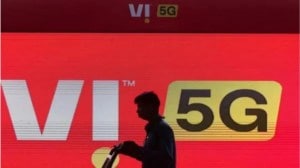The Apple story: Steve Jobs, Tim Cook, and the secrets behind the iconic brand
Want to understand Apple? These best sellers trace its journey from garage start-up to global giant.
 While there is no single official story of Apple, many authors have tried to tell the story of the brand and what makes it tick. (Source: Express File)
While there is no single official story of Apple, many authors have tried to tell the story of the brand and what makes it tick. (Source: Express File) Love it or hate it (hey, Android person!), you just cannot afford to ignore Apple if you live on this planet. Rare is the day that passes without talk of something that Apple has done, is planning to do, or—most often—is rumoured to be planning to do. From its products to its presentations, to its ad campaigns, executives, and policies, the company seems to have taken a permanent lease in the spotlight.
The remarkable thing is that it has done so without any overtly extensive communications campaign—Apple does not hold too many events, is not known for taking media on junkets regularly, and its executives are notorious for being generally tight-lipped (you will seldom see Tim Cook giving more than a handful of interviews in a year). So, at the launch of yet another iPhone (on September 9), it is worth wondering: what makes Apple so special?
While there is no single official story of Apple and its most successful CEOs (Steve Jobs and Tim Cook) have not written their memoirs, many authors have tried to tell the story of the brand and what makes it tick.
Books on Apple: before and after the return of Jobs
Books about Apple fall into two broad categories: those written before Steve Jobs’ dramatic return to the company in 1996, and those written after. They are often very different from each other, simply because the company itself underwent a major change after Jobs’ return. Most books written prior to Jobs’ comeback followed a classic “rise and fall” format, focusing on how a brand that had everything going for it ended up in the dumps.
It was also notable that in this period, authors and the media seemed to have far greater access to Apple, resulting in many books being written about the brand—often less than complimentary, focusing on infighting and internal politics. The books since 1997 have tended to be more objective and relatively less judgmental, as Apple became famous for restricting media access.
 Originally published in 1984 as The Little Kingdom: The Private Story of Apple Computer. This book was remarkable for being very objective about Apple Source: amazon.in)
Originally published in 1984 as The Little Kingdom: The Private Story of Apple Computer. This book was remarkable for being very objective about Apple Source: amazon.in)
If you are looking for books that cover the Apple story across both eras, then Michael Moritz’s Return to the Little Kingdom: Steve Jobs, The Creation of Apple, and How It Changed the World is perhaps the best. Originally published in 1984 as The Little Kingdom: The Private Story of Apple Computer, the book was remarkable for being very objective about Apple, even in the heady early days of its rise. Unlike many journalists, Moritz was neither enthralled nor disgusted by Jobs and told the story of the brand in an almost novel-like narrative, including extensive quotes from those associated with it. However, it ended in 1984, with Apple’s launch of the Macintosh, making it a little dated.
Fortunately, Moritz returned to the book and rewrote it extensively after Jobs’ comeback in 1996, covering the revival of the brand and its entirely new array of products. Still, it was released in the very early days of the iPhone and so missed out on its impact. Also covered is Jobs’s controversial departure from the company in 1985 following his dispute with John Sculley, and his subsequent return.
Some might find the book a little too pro-Jobs compared to the original 1984 version, but to be fair, Jobs had indeed engineered perhaps the greatest comeback in corporate history. This 350-page book captures the history and culture of Apple like no other.
 The book cover of Owen W. Linzmayer’s Apple Confidential 2.0: The Definitive History of the World’s Most Colorful Company.
The book cover of Owen W. Linzmayer’s Apple Confidential 2.0: The Definitive History of the World’s Most Colorful Company.
Those looking for a more conventional history of the company, revolving more around key events, personnel, and incidents, can turn to Owen W. Linzmayer’s Apple Confidential 2.0: The Definitive History of the World’s Most Colorful Company. Although it lacks the narrative impact and nuance of Moritz’s work, this 320-page book is perhaps the easiest to read on the Apple story, packed with images and snippets of information. There is a catch, though—it ends in 2004. Like Little Kingdom, it too was revised (originally published in 1999), but it has a slightly dated feel. Still, it remains one of the few works that covers both the early and later eras of Apple reasonably well, although it is a little dry in narration. You will get the facts about Apple here, but its mystique remains largely unexplained—for that, read Moritz.
What makes Apple special? Decoding the Apple mystique
 Carmine Gallo’s The Apple Experience: Secrets to Building Insanely Great Customer Loyalty focuses on how Apple built and retained its consumer base. (Source: amazon.in)
Carmine Gallo’s The Apple Experience: Secrets to Building Insanely Great Customer Loyalty focuses on how Apple built and retained its consumer base. (Source: amazon.in)
A number of authors have tried to analyse what makes Apple successful and why it inspires an almost cult-like following. The easiest to read in this regard is Carmine Gallo’s The Apple Experience: Secrets to Building Insanely Great Customer Loyalty. Written in 2012, the 250-page book focuses more on Apple’s practices and procedures around building and retaining its consumer base.
Gallo tends to oversimplify matters at times, but what makes The Apple Experience very different from other books on the same subject is that he does not lean too heavily on Apple’s history or Steve Jobs. This is a classic marketing and consumer-practices book, and Gallo has written it fluently.
 Ken Segall’s Insanely Simple: The Obsession That Drives Apple’s Success was published in 2012 after the death of Jobs. (Source: amazon.in)
Ken Segall’s Insanely Simple: The Obsession That Drives Apple’s Success was published in 2012 after the death of Jobs. (Source: amazon.in)
A more personal look at Apple’s style of work, particularly its legendary communications, comes in Ken Segall’s Insanely Simple: The Obsession That Drives Apple’s Success, published in 2012 after the death of Jobs. Segall worked extensively with Jobs as part of the TBWA\Chiat\Day agency and was involved in a number of legendary campaigns, including Think Different and The Crazy Ones (which he co-wrote).
His book is the closest thing to an insider’s look at how Apple works. There is a lot of Jobs in the book and Segall’s awe of him comes right through, but so does the emphasis Apple places on being direct and keeping messages and processes simple. Just as Little Kingdom captures the essence of Apple as a company, Segall gives us a great view of how it handles communications. Like Moritz, Segall writes fluently, and at 250 pages, Insanely Simple is an informative read that never feels too heavy.
If Segall’s book largely revolves around communication, Ken Kocienda’s Creative Selection: Inside Apple’s Design Process During the Golden Age of Steve Jobs gives readers a very entertaining look at how Apple goes about design. Like Segall, Kocienda’s affection and respect for Steve Jobs shine through, but what readers also get is a fascinating insight into the struggles of designing devices ranging from a humble keyboard to a complicated iMac.
Kocienda, who worked at Apple, had an insider’s perspective on how things worked (and didn’t) at the company. His 300-page book is a great read for those who want to know the Apple way of innovation and its guiding principles.
The core of Apple – the people (Steve, Woz, and Co.)
 Walter Isaacson’s 600-page biography remains the best single book about Jobs, and it also covers his association with Apple in detail. (Source: amazon.in)
Walter Isaacson’s 600-page biography remains the best single book about Jobs, and it also covers his association with Apple in detail. (Source: amazon.in)
As fascinating as Apple itself are the people who have played key roles in the brand’s rise, often becoming celebrities in their own right. The most famous, of course, is Steve Jobs, who has proper tech-legend status. While one could do an entire column on books about him (and we will, so stay tuned), Walter Isaacson’s 600-page biography remains the best single book about Jobs, and it also covers his association with Apple in detail.
 iWoz is the memoir of Apple’s co-founder Steve Wozniak. (Source: amazon.in)
iWoz is the memoir of Apple’s co-founder Steve Wozniak. (Source: amazon.in)
Almost as legendary as Jobs in tech circles is Apple’s co-founder Steve Wozniak. His memoir, iWoz: Computer Geek to Cult Icon – How I Invented the Personal Computer, Co-Founded Apple, and Had Fun Doing It, is perhaps the most personal perspective ever on the brand from its inception. In keeping with his easy-going, generous character, Wozniak avoids controversy and dramatic revelations, but his book gives readers an authentic view of one of the two key figures in Apple’s early years and what the company was like in the beginning.
 Leander Kahney has written informative biographies of both CEO Tim Cook and designer Jonathan Ive.
Leander Kahney has written informative biographies of both CEO Tim Cook and designer Jonathan Ive.
The two other major Apple personalities in recent times have been CEO Tim Cook and legendary designer Jonathan Ive. Interestingly, former Wired writer Leander Kahney has written very informative biographies of both—Tim Cook: The Genius Who Took Apple to the Next Level and Jony Ive: The Genius Behind Apple’s Greatest Products.
Both span around 300 pages each, and while they are not as compelling as Isaacson’s or Moritz’s works, they give an excellent perspective on two people who played crucial roles in Apple’s post-Jobs era (Ive has since exited the company).
There are, of course, other books on the brand—including a fair number that insist Apple is going downhill post-Jobs—but the jury is still out on that. The Apple story is still being written, and who knows? One day we might even have a proper official history of the brand. But even if we do not, there will always be plenty to read about the company that Thinks Different.



- 01
- 02
- 03
- 04
- 05




























